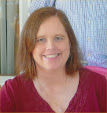Once again my country is embarrassing me. Okay, technically it isn’t my country, it is the Harper government (what else is new?), but on the international news they only report what “Canada” is doing.
It seems that George Galloway, a British MP for 23 years, an anti-war activist who spoke in Canada last year and is currently in the United States, will not be allowed to visit Canada on a scheduled speaking tour because he is a “security risk”.
Galloway has no criminal record, no history of violence, but is considered a threat to Canada because he is a supporter of Hamas – who, I might point out, is a democratically elected government that has never threatened Canada in any way.
The opinions Galloway holds about the Israeli/Palestinian land – that it should form a single state in which Jews, Muslims and Christians would live as equals – is not popular with the Tories. But they say this is not an issue of free speech. It is strictly the danger he poses to the country.
Now, if he were someone who had attacked foreign countries for no reason, committing war crimes and killing hundreds of thousands of innocent people, I could understand some hesitancy in allowing him within our borders. But George W. Bush was just welcomed with open arms.
It makes me uncomfortable when warmongers are welcomed by my government while those who oppose violence are considered a threat. Stephen Harper, it would appear, considers me a danger to my own country. But then, I feel the same about him, so I guess it is only fair.
Probably a bigger concern is the one that the Conservatives say is not an issue: free speech. In a minority position they are keeping out foreigners who say things they don’t like. What they might do if they ever win a majority is truly a scary thought.
Tuesday, March 24, 2009
Friday, March 20, 2009
Microfinance, Kiva and You
Although many people in these days of recession have all they can do to look after themselves and their families, there are always some with a bit to spare, and many of those want to help others.
There are many ways to help, and I would never rate one above another. Anything we can do for those in trouble is valuable. What I would like to do is introduce another way to help that many people may not be familiar with.
Some of you may have heard the term “microfinance”. Simply put, it is the process of providing very small loans to people, often in the developing world, who would not qualify for a loan through a regular bank. These people, many of them women, have no collateral, but want to get started in a small business.
The idea is believed to have started in 1976 with the Grameen Bank in Bangladesh, which still provides microcredit to impoverished women there. It has helped many families climb out of desperate poverty.
Very interesting, you are saying (or maybe not), but what does this have to do with me? I’m not a bank.
Well, I was looking into a way to help people that would not cost more than I could afford, and I came across www.kiva.org. This organization allows individuals to get involved in microfinance.
It works like this: a woman in Ghana wants to borrow $500 to expand her food stall. Kiva organizes loans of $25 each from 20 different lenders to make up the amount, provides the money, sets up a repayment schedule, and collects the payments. Their default rate is 2.1%.
You, as the lender, do not make any money. The interest charged goes to run the organization. But when you get your $25 back, you can lend it to someone else, and use the same money to help several people.
If you have $25 to spare, give it a thought. You get to choose the people and projects your money helps, and receive reports on their progress. Who knows - you just might change some lives.
There are many ways to help, and I would never rate one above another. Anything we can do for those in trouble is valuable. What I would like to do is introduce another way to help that many people may not be familiar with.
Some of you may have heard the term “microfinance”. Simply put, it is the process of providing very small loans to people, often in the developing world, who would not qualify for a loan through a regular bank. These people, many of them women, have no collateral, but want to get started in a small business.
The idea is believed to have started in 1976 with the Grameen Bank in Bangladesh, which still provides microcredit to impoverished women there. It has helped many families climb out of desperate poverty.
Very interesting, you are saying (or maybe not), but what does this have to do with me? I’m not a bank.
Well, I was looking into a way to help people that would not cost more than I could afford, and I came across www.kiva.org. This organization allows individuals to get involved in microfinance.
It works like this: a woman in Ghana wants to borrow $500 to expand her food stall. Kiva organizes loans of $25 each from 20 different lenders to make up the amount, provides the money, sets up a repayment schedule, and collects the payments. Their default rate is 2.1%.
You, as the lender, do not make any money. The interest charged goes to run the organization. But when you get your $25 back, you can lend it to someone else, and use the same money to help several people.
If you have $25 to spare, give it a thought. You get to choose the people and projects your money helps, and receive reports on their progress. Who knows - you just might change some lives.
Subscribe to:
Posts (Atom)
